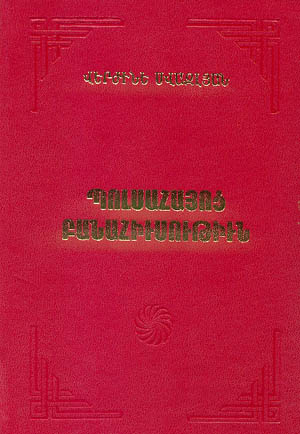
| About this page in Armenian |

After the fall of Constantinople in 1453, Fatih Sultan Mohamet II proclaimed it capital of the Ottoman State and renamed it Istanbul.
The monarch transferred there the families of the Armenian masters from the inner provinces of the Turkish Empire, who not only increased the number of the flourishing Armenian community, but also imparted beauty and radiance to the newly-established capital with the ability of their mind and their arm.
Under the immediate supervision of Sultan Fatih Mohamet, the Armenians found a true atmosphere of activity and, owing to the religious freedom afforded, founded in the new capital the Armenian Patriarchate of Turkey in 1461, to which the Sultan granted certain ecclesiastic and communal rights.
There were at that time about one thousand Armenian families in Istanbul. During the subsequent years the number of Armenians in Istanbul grew gradually as a result of the migration of people from the provinces in search of work. The Armenian jewellers, silk-spinners and other craftsman enjoyed a great reputation. The wealthy class was composed of money-changers, money-lenders and tradesmen, who, owing to their capital and enterprising efficiency, had gained influential positions, had established ties with the Sultan's Court and played an active role in the economic and political life of Turkey.
The important state functions of the Sultan's Court had been trusted to the Armenians, who conducted them devotedly and by inheritance, from generation to generation. Thus, Harutyun Amira Bezjian was the Sultan's counsellor, the Duzians governed the jeweller's art and the mintage, the Dadians were leaders in gunpowder manufacture, the Balians were distinguished in architecture, etc. The Armenians have had also ministers of the Post, the Telegraph, the Public Constructions, Agriculture, Foreign Affairs in the government of the Ottoman Empire and subsequently, deputies of the Ottoman Parliament as well.
The commission merchants were also among the wealthy class and greatly fostered the developing trade between Turkey and Europe.
The Armenian community in Istanbul included also famous intellectuals, artists and architects, who had an active participation not only in the Palace, but also in the public and political progress of the country.
During the 539 years of its existence, the Armenian Patriarchate of Turkey, with its various religious and cultural activities, has lead the Armenian community along the path of civilization, constantly supporting the social and ideological ascent of the country. It has also greatly contributed to the unification of the Armenian people, to the preservation of its national identity, language and culture. At present, the Armenian Patriarch in Turkey is His Beatitude Archbishop Mesrob M. Mutafian.
Now the Armenians have 42 churches and 19 schools in Istanbul and the provinces. The schools have their alumni associations, which keep alive the cultural life of the Armenian community by their various artistic enterprises and publications.
Besides the daily newspapers "Zhamanak" and "Nor Marmara," the weekly journals "Akos" and "Lraber" (publication of the Patriarchate) are published in Armenian and Turkish languages, the yearbook "Shoghakat," the monthly journal "Soorp Prkitch," the reviews "Hopina" and "Poondj" are published in Armenian.
At the present time, about 60 thousand Armenians reside in Istanbul and 5 thousand live in the provinces. They are engaged in trade and handicrafts. The Armenian community has devoted clergymen, teachers, physicians, writers and artists, who have been specialized in Turkey and in foreign countries.
It is impossible to conceive the spiritual character of the Armenian community of Turkey without studying its oral tradition, which has been transmitted from generation to generation.
The various materials of the oral tradition (1516 units) we have written down from the representatives of the Armenian community of Turkey (120 narrators) have been summarized in the present collection under the following headings.
The volume includes also a glossary of foreign words and dialects, foot-notes, songs accompanied by musical notes, photographs of narrators and commentaries.
The present collection of oral folk tradition gives the reader an idea about the past mode of life, demeanour, customs, emotions and experiences of the Armenian community of Turkey, as well as about the present day joint, peaceful and creative life of the Armenian and Turkish peoples in the Republic of Turkey.
See also:
http://www.cilicia.com/armo_bolis_folklore.html

|
Previous Turkish Language Songs | Next Testimonies of the Eye-Witness Survivores |